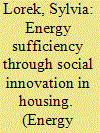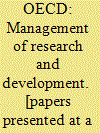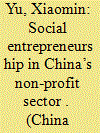| Srl | Item |
| 1 |
ID:
130732


|
|
|
|
|
| Publication |
2014.
|
| Summary/Abstract |
Disputes within the family and cases of domestic violence in Bangladesh have traditionally been resolved either among kinsmen or in village panchayats where young women have had less opportunity to be heard. This article describes a third-sector initiative in alternative dispute resolution (ADR) in cases of domestic violence in Sylhet, Bangladesh. Data from 20 case studies of female victims of domestic violence, interviews with six lawyers, and participant observation in 10 mediations in a counselling centre are used to examine how this kind of social innovation affects the bargaining position of battered women in a kin-based, patrilineal and patrilocal society. The battered women involved in these mediations were rural or urban, less educated, and economically disadvantaged. The findings illustrate the limitations of ADR in cases of domestic violence. ADR as practiced in Sylhet, Bangladesh provides poor women a chance to be publicly heard in mediations of their domestic crises. However, ADR often fails to deliver lasting, just, and socially progressive solutions. The adoption of ADR practices should not be considered as an alternative to the development of the formal judicial system, because it lacks the power to enforce agreements and supports the hegemonic status quo, leaving the battered woman and her natal family with very limited options.
|
|
|
|
|
|
|
|
|
|
|
|
|
|
|
|
| 2 |
ID:
163567


|
|
|
|
|
| Summary/Abstract |
Experience shows that energy savings through energy efficiency measures are partly compensated by income growth, and partly by rebound effects. Therefore to be effective, efficiency measures have to be embedded in a concept of sufficiency which strives for limits and absolute reduction of energy consumption. While the sufficiency concept is not new, it only recently gained attention in the field of housing. This paper provides a basis for broader and more informed debates in policy and research on the potential of sufficiency considerations to contribute to the overall reduction of energy consumption in the residential sector. It recommends shifting the attention from energy consumption of buildings towards a concept of sustainable homes in which e.g. the size of the living area plays a crucial role. A further important aspect is the possibility to fulfil other basic needs like the provision with food, recreation and social contacts in the nearby environment. The paper describes first examples of housing projects guided by sufficiency criteria, depicts the potential roles of different actor groups and points towards some general policy recommendations.
|
|
|
|
|
|
|
|
|
|
|
|
|
|
|
|
| 3 |
ID:
130727


|
|
|
|
|
| Publication |
2014.
|
| Summary/Abstract |
This special issue examines innovation as social change in South Asia. From an anthropological micro perspective, innovation is moulded by social systems of value and hierarchy and simultaneously potentially transforms them. The articles in this special issue examine a number of innovations in South Asian contexts: the printing press's changing technology and its intersections with communal and language ideologies in India (Peterson); mobile telephony, gender, and kinship in West Bengal (Tenhunen); microcredit and its relationship with social capital in Bangladesh (Uddin); imbalanced sex ratios and the future of marriage payments in north-western India (Jeffery); and how alternative dispute resolution as a social innovation affects battered young wives' life situation options in Sylhet, Bangladesh (Ashrafun and Säävälä). These case studies give insights into how the deeply engrained cultural models and values affect the forms that an innovation process can take. In a social field, actors are not situated symmetrically vis-à-vis an innovation. In South Asian societies that are starkly hierarchical and holistic, innovations may have unpredictable sociocultural repercussions.
|
|
|
|
|
|
|
|
|
|
|
|
|
|
|
|
| 4 |
ID:
143501


|
|
|
|
|
| Publication |
Turkey, OECD, 1972.
|
| Description |
329p.pbk
|
|
|
|
|
|
|
|
|
|
|
|
Copies: C:1/I:0,R:0,Q:0
Circulation
| Accession# | Call# | Current Location | Status | Policy | Location |
| 010994 | 658.57/OEC 010994 | Main | On Shelf | General | |
|
|
|
|
| 5 |
ID:
147844


|
|
|
|
|
| Summary/Abstract |
In recent years, civil society organisations in China have increasingly taken entrepreneurial and innovative approaches to enhance their ability to fulfil social missions. How are we to delineate the salient characteristics of non-profits engaging in socially entrepreneurial activities in comparison with their conventional counterparts? Will the emergence of social entrepreneurship in China’s non-profit sector engender new opportunities for grassroots social organisations to overcome the financial and institutional impediments constraining their development? This article tackles these issues through an in-depth case study of a typical social entrepreneurship initiative launched in the process of post-disaster construction after the 5.12 Wenchuan Earthquake in 2008. The findings indicate that socially entrepreneurial non-profits participate in post-disaster reconstruction more innovatively than conventional non-profits in various ways. Nevertheless, they still need to conquer organisational and contextual challenges before evolving into an effective remedy to the development pains of grassroots social organisations in China.
|
|
|
|
|
|
|
|
|
|
|
|
|
|
|
|